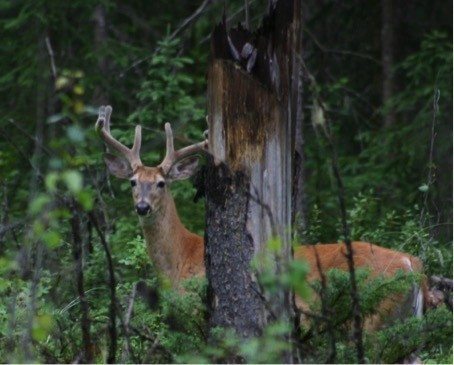Rethinking 30 years of Dutch nature restoration
It has been 30 years since the Dutch government agreed to actively restore nature and invest large amounts of money to do so. It made promises to connect natural habitats again, creating safe passages and corridors for wildlife to move. Another point of attention included the transition to environment-friendly agriculture. However, 30 years and 11 billion euros of investments later, Dutch biodiversity is still declining as natural areas remain fragmented. This is the conclusion of the research that the Dutch newspaper Trouw conducted.
Please also read: Efficient and sustainable ecological restoration
Sounding the alarm
The newspaper analysed reports on biodiversity recovery and recognised that the reports have been sounding the alarm for several years that current practices are failing. One report even stated that continued existence of up to 90% of the natural areas, 70% of the plants and mammals, and up to 40% of the birds is uncertain. These numbers contradict the agreements that the Dutch made with the European Union, despite the investments of billions of euros.
One of the main drivers of Dutch biodiversity loss is the habitat fragmentation. Back in 1990, the Dutch government proposes to connect 730 000 hectares of natural areas by 2018. The plan even inspired the EU to create the Natura 2000 network to foster natural connectivity on a European scale. The Dutch allocated a budget of 10 billion euros to the government, provinces and nature organisations to achieve this ambitious goal. Yes, the Dutch have increased the surface of natural areas somewhat, but the fragmentation remains. This prevents animal and plant species to move between areas, which is crucially important in such a densely populated country.
Nature under pressure
The second driver that the research identified, is the harmful impact of environment-unfriendly agricultural practices. The country is dealing with a massive challenge regarding nitrogen deposition. More than half of the species and habitats are suffering from excessive nitrogen levels in the soils. To combat this challenge, financial subsidies have been in made to help farmers create environment-friendly agricultural fields. Successfully one could say, as 90% of the farmers implemented at least 1 measure by 2018. Yet, instead of planting trees and shrubs, many farmers chose the option to plant the common Lolium grass. This grass is subsidised, but contributes little to natural biodiversity.
Another challenge of the agricultural sector is the management of the lands. Changing the intensive management to natural management would allow agricultural areas to become more suitable stepping stones to connect natural areas. Nevertheless, only few farmers participated in this management change. And if they did, they only allocated a small part of land to be naturally managed. Yes, the farmers are protecting nesting birds, and mow their lands later. But this contributes little to halt the overal biodiversity decline. Reports state that farmers manage only 4% of agricultural lands naturally.
Dutch nature management in vain?
So have the past 30 years been a waste of time and money? Experts state that the Dutch biodiversity had been much worse if there had been no management at all since the 1990s. However, nature restoration remains a complex topic that is often not easy to solve with small scale, financially attractive solutions. What happened to the plan of 730 000 hectares of connected natural habitats by 2018? The government updated the numbers, and is now striving to connect 680 000 hectares by 2027. This gives the Dutch nine more years to achieve a goal that is 50 000 hectares smaller than originally planned.
Despite the outcomes of this research, which cast a rather dark cloud over the future of Dutch nature, there are also other good developments in nature. Wildlife species such as the iconic wolf have returned to the country and settled for now. Their return raises additional questions on the ‘use’ or ‘benefit’ of their presence, exposing perhaps the root of the problem that the Dutch face. Should nature always be used by people to our own benefit? Let us know in the comments below what you think!










You are absolutely right. Nature conservation is more and more a human-human conflict issue.
The problem with Dutch “nature” is threefold: (1) there is no remaining wild area left that is not in some way utilized by society; (2) most acknowledged nature area’s consist of habitats that reflect some historically fixed agricultural or other form of (over)exploitation, and (3) actual environmental pressures in one of the most densely populated and intensely producing societies are enormous and still growing and can only in part be mitigated by nature management measures.
But we want it all, because that is the only feasible way to reconcile conflicting interests.
We should not so much criticize the audacious, although not sufficient policies and measures concerning the national ecological network, but instead should focus on eliminating these still growing pressures from society related to a very unsustainable economy and way of living.